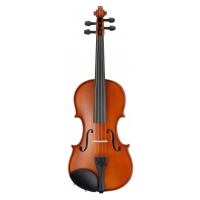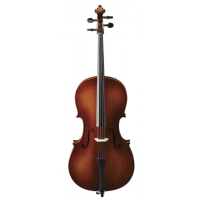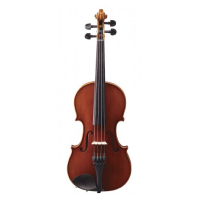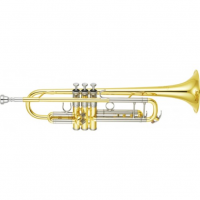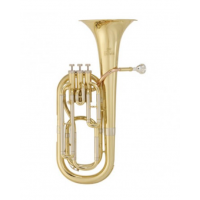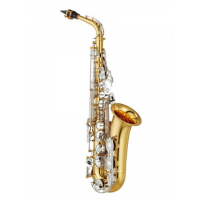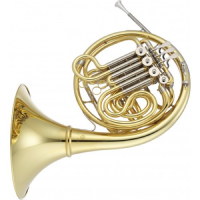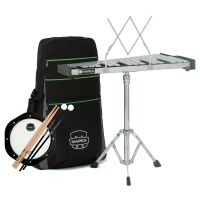History of the Double French Horn
How well do you know the history of the double french horn?
The double french horn is a German invention of the late 19th century which built upon the success of the single french horn. The name "French horn" is inaccurate, but the name persists to this day all the same.
Two inventors are commonly given credit for inventing the double french horn: Fritz Kruspe and Edmund Gumpert. While there may never be a satisfying answer to the question of which one was truly first, Kruspe is more commonly thought to have been first.
The modern french horn has its roots in the design of the curved hunting horn, known as a monotone horn. French horns were not heard in a performance setting until the 1500s, when they began appearing occasionally in scores for operas. However, their use was limited to creating sounds that evoked the hunt.
Horns crafted from animal tusks or horns were the original inspiration for the form and function of the metal horn. They could be blown to make a loud, commanding tone and were used in war and religious ceremonies. Eventually craftsmen began mimicking the shape and sound in metal, which was usually brass. However, these instruments were limited to a single harmonic series based on a single tone. The range depended on the skill of the hornist.
Since each horn was tuned to just one primary note, changing keys meant using a different horn. It wasn't until the 18th century that "crooks" were invented. These were removable sections of brass tubing that, when inserted, changed the key of a specific horn. The crook concept was invented by Anton Joseph Hampel, a German musician. Even with this idea, the horn player would still have to physically switch out crooks to produce a new key, so this effectively limited the player to one pitch series for each piece they played.
One major breakthrough in pre-double french horn playing came when some unknown pioneer discovered that covering the bell of the horn resulted in a lower tone. This technique is called "stopping." Most players did this by placing their right hand into the bell, which changed the length of the horn and allowed the production of a wider range of notes.
The 1800s were a fruitful time for the french horn. In the early 1800s, the valve was invented to replace the crooks. This key advancement gave the horn player a completely chromatic instrument to use and made the modern single and double french horns possible. Despite the importance of this new idea, the name of the ultimate inventor of the valve is not known with total certainty. Historians credit both Heinrich Stoelzel and Friedrich Bluhmel as the valve's likeliest inventors.
Acceptance of the new instrument was slow at first. Early valves or pistons were crude and unreliable. In addition, the popular taste for the use of horns in a musical setting made no provision for the new functionality, and players who had mastered the difficult monotone horns were slow to accept this advancement. Gradually, the natural advantages of the single french horn began to overcome any reticence. Late in the 1800s, composers began to include chromatic lines for french horns in scores.
The double french horn was invented in an effort to solve some of the acoustic challenges of the original single french horn. With the single horn, the upper registers of pitch range are tricky to pull off accurately because the overtones are close together. The double french horn adds a second, higher register horn (commonly a Bb horn) to the original F horn, allowing high passages to be played with greater ease and accuracy.
The double french horn may be a later invention than the single, but it would be incorrect to assume that the single french horn is not worthy of study. The challenges and unique qualities of the single french horn still draw highly skilled players to this day.
Famous Players
Despite the unparalleled beauty of its tone, the french horn is not heard widely outside of a classical context. Famous players of the french horn include Dennis Brain, Eric Ruske, Barry Tuckwell, Phillip Farkas and Dale Clevenger.









